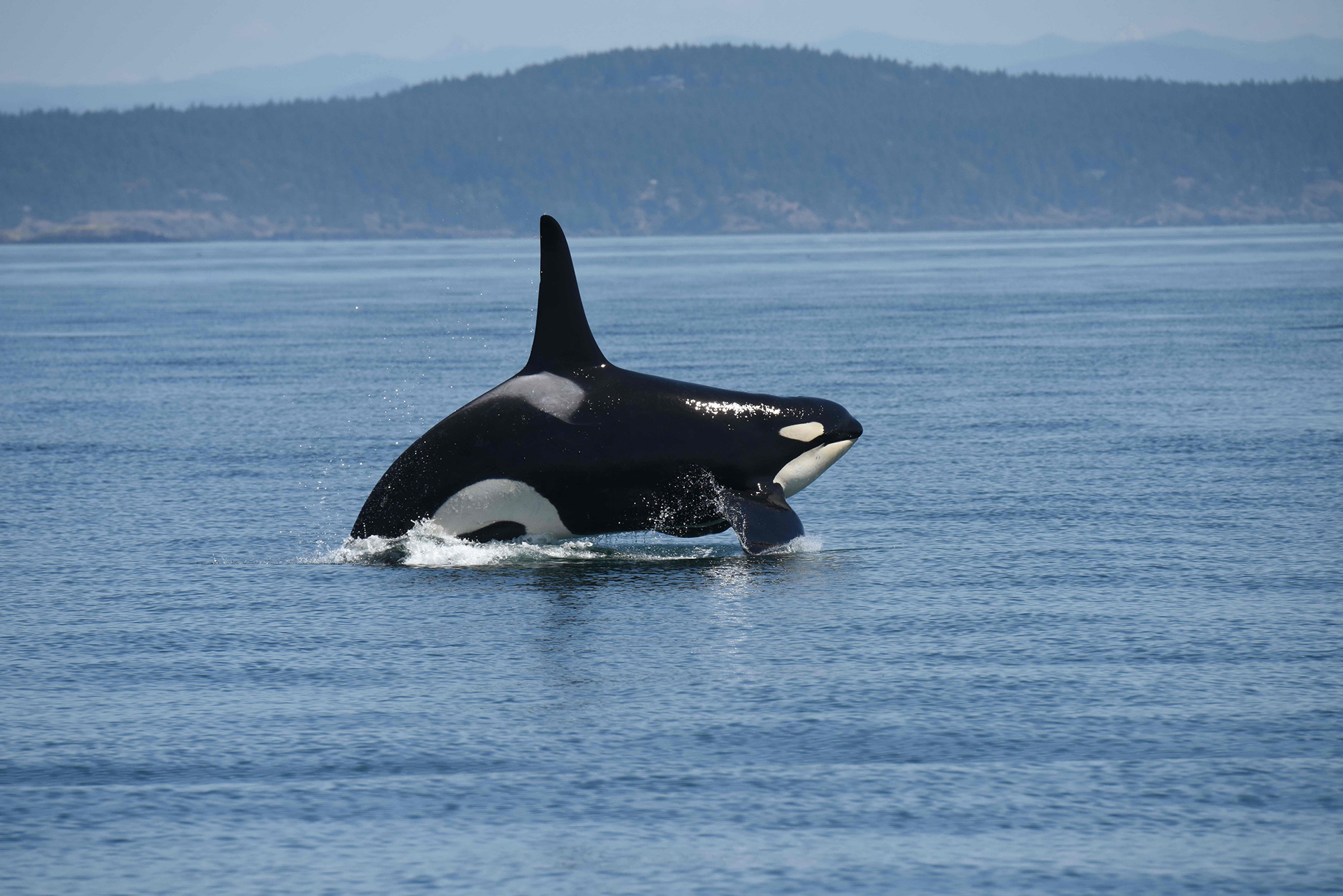Southern resident killer whales not getting enough to eat since 2018
June 27, 2022

June 27, 2022

The endangered southern resident killer whale population isn’t getting enough to eat, and hasn’t been since 2018, a new UBC study has determined.
The animals have been in an energy deficit, averaged across spring, summer and fall, for six of the last 40 years—meaning the energy they get from food is less than what they expend. Three of those six years came in the most recent years of the study, 2018 to 2020. The average difference in energy is 28,716 calories, or about 17 per cent of the daily required energy for an average adult killer whale, the authors say.
“With the southern resident population at such a low level, there’s a sense of urgency to this kind of research,” says lead author Fanny Couture, a doctoral student at the Institute for the Oceans and Fisheries (IOF) and Ocean Wise. “Both killer whales and Chinook salmon, the southern resident's main prey, are important, iconic species for the west coast of Canada. Studying what is happening to the population may help offer solutions, both for the southern residents and potentially other killer whale populations in the future.”
The southern resident population, which feeds mainly on Chinook salmon, numbered 73 individuals as of October 2021, compared with the increasing northern resident population of about 300. Studies have posited that the growth of the southern resident population may be impeded by a lack of food.
The researchers analyzed how changes in the abundance, age and size of Chinook, coho and chum populations that the southern residents prey on in the Salish Sea and at the west coast of Vancouver Island influenced the daily food consumption of the killer whales, from 1970 to 2020 for three seasons each year.
The study used estimated declines in Chinook salmon abundance and size to show that lower availability of these fish has likely resulted in killer whale energy deficits. "The years where southern residents were in an energy deficit are also years where other studies report lower population growth rate and higher mortality rates for the killer whales,“ says co-author Dr. Villy Christensen, professor at IOF.
Previous research has shown correlations between Chinook salmon abundance and southern resident survival rate and fertility. The decline in Chinook salmon abundance could be attributed to many factors, says Couture, including the effects of climate change, greater susceptibility to disease, and predation by other animals.
The model also projected that southern residents would consume more chum salmon than Chinook during years where Chinook were at low levels, showing the animals could switch to other salmon species when the abundance of their primary prey declines.
Senior author Dr. Carl Walters, professor emeritus at IOF, said commercial fisheries for Chinook salmon in Canada were reduced in the late 1990s following observations of declining abundance. “Those declines have continued despite severe fisheries reductions, and one very likely candidate for causing them is the massive increase in abundance of Steller sea lions since the mid-1980s; those sea lions now consume more fish than all the BC commercial fisheries for all species, combined.”
Nonetheless, the dire situation for southern resident killer whales may call for a reduction in the catch of larger Chinook salmon, which are predictors of whether the southern residents fall short energy-wise, said Dr. Christensen. This could include promoting fishing techniques that increase the survival of larger fish.
Other factors that could be influencing the availability of prey for the southern residents include underwater noise pollution from boats that could affect foraging, Couture says. This could be an area for future research. Researchers could also apply their model to the northern resident population to determine if they too have an energy deficit.
The model did not include winter, as it’s unclear where southern residents are during the season.
We honour xwməθkwəy̓ əm (Musqueam) on whose ancestral, unceded territory UBC Vancouver is situated. UBC Science is committed to building meaningful relationships with Indigenous peoples so we can advance Reconciliation and ensure traditional ways of knowing enrich our teaching and research.
Learn more: Musqueam First Nation